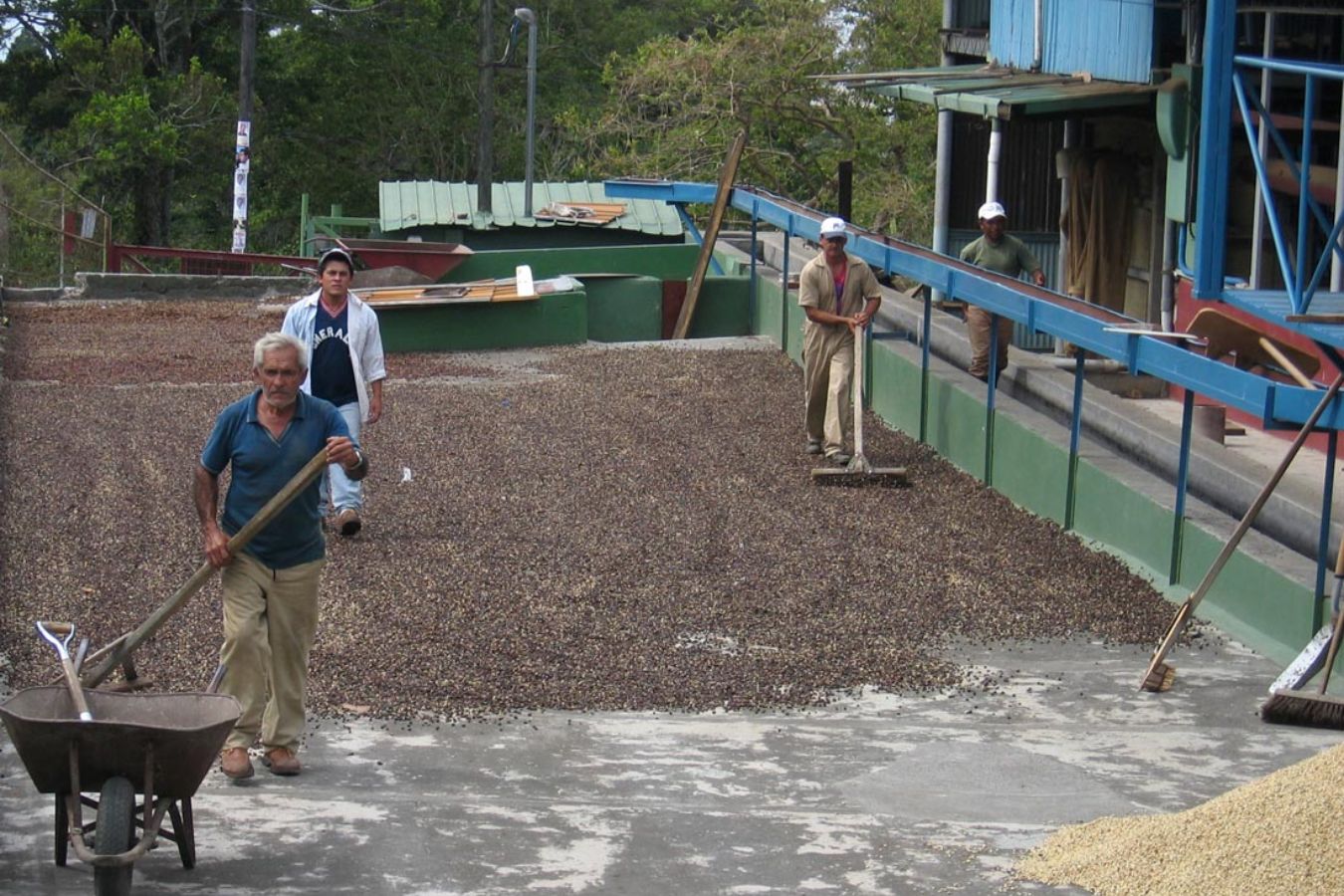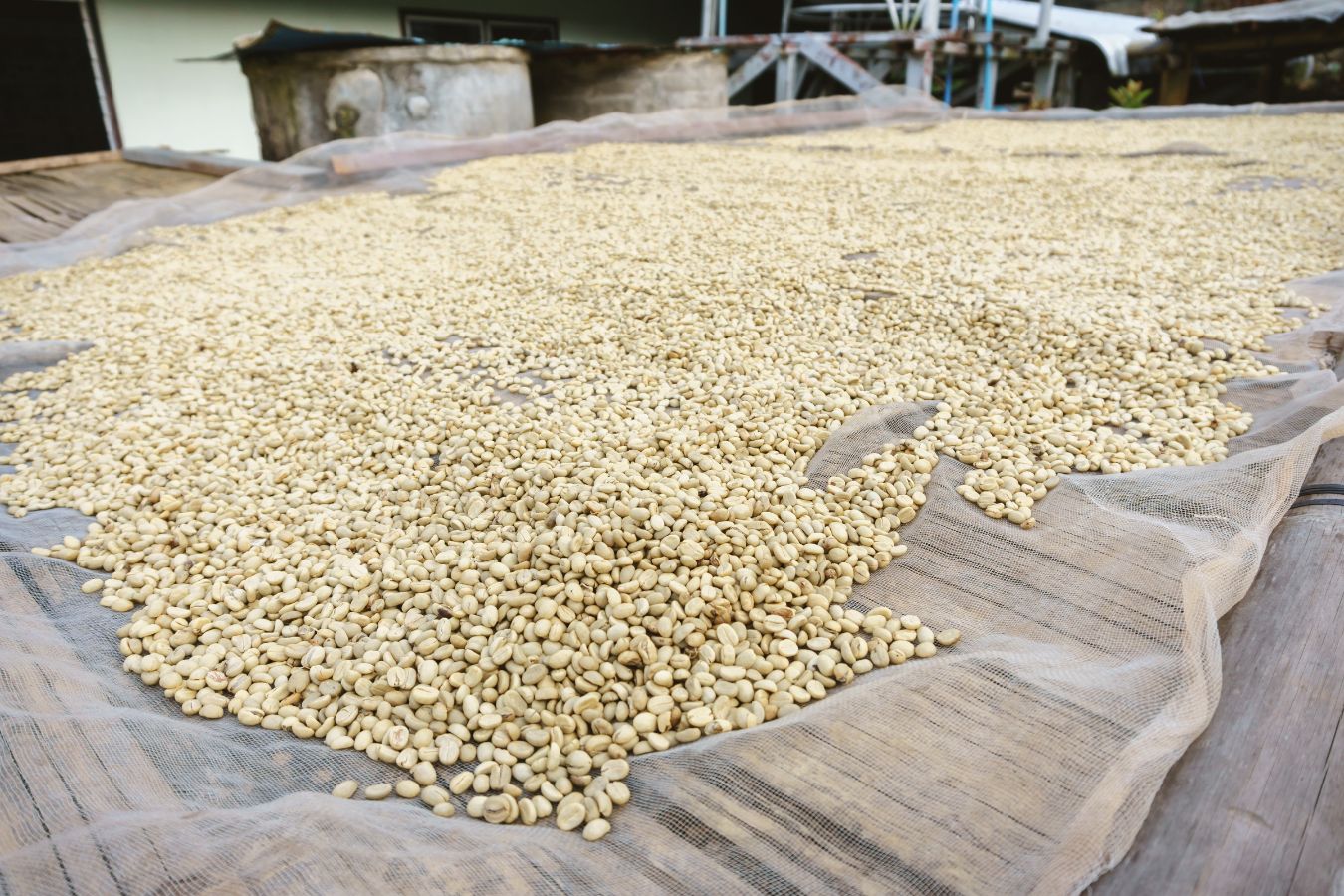
Basic Stages In The Processing Of Coffee – There are several crucial phases in the coffee roasting process, and each stage’s length varies substantially depending on the roast character the roaster wishes to achieve. The essential steps of roasting, as well as variations in those processes, are listed below.
Drying is the first stage
Water makes up 7 to 11% of a green coffee bean’s weight and is equally distributed throughout the grain structure. Like cooking other foods, coffee beans cannot become brown if they have water.

After the coffee beans are thrown into the roaster, it takes a certain time to absorb just enough heat to evaporate the water, so the drying process necessitates heat and time. It’s pretty significant. During the first few minutes of this step, the colour and flavour of the coffee beans will not alter much.
Yellowing is the second stage
When the water in the coffee beans has drained, the initial browning reaction begins. The coffee beans are still hard and dense, with a faint aroma of basmati rice (Indian rice) and a little bread flavor. The coffee beans will then begin to swell, and the silk cover will start to peel away. Wind blasted into the roasting cage separates the silk skin from the coffee beans, safely collected to avoid burning.

The first two processes are crucial: if the bean is not adequately dried, it will not be roasted uniformly in the following stages, and it is possible that even if the exterior layer of the coffee is nicely roasted, the inner layer will not be. The interior may be still unripe. Such coffee beans will not be able to taste well since their flavor will be bitter on the outside and sour and grassy on the inside due to the unripe state. Because different bean sections react to heat differently, slowing down the roasting process will not result in a prime roast.
Stage 3: the initial crack (first crack)
Gas (mostly Co2 gas) and water vapour from inside the coffee beans as the browning cycle accelerates. The coffee beans will break when the pressure rises, generating a loud noise and nearly doubling in size. The distinctive coffee flavour will begin to emerge at this point, and the roaster will be able to stop the roasting process at any time from now on.
Even if the amount of heat input stays constant, the roaster must watch for the moment when the pace of heating of the beans begins to slow. Failure to provide enough heat to the coffee will cause the roasting process to be delayed, resulting in the beans burning and a loss of quality.
Stage 4: Developing a Taste (Roast development)
The surface of the coffee beans will be smoother but not flawless after the first crack (first crack). The colour and roasting of the coffee beans will be determined. The roaster will strike a balance between the sourness and bitterness of the coffee beans at this time, as the sourness will soon fade while the bile rises as the roasting process progresses.
Stage 5: The second flaw
The coffee beans will erupt a second time, but with a quieter sound. The oil will begin to seep onto the surface of the coffee beans at this time, most of the sourness will have vanished, and the characteristic “regular” coffee flavor will have developed. This flavor is irrespective of the coffee used because it results from burning and losing its original natural flavor.
After a second blast, continuing to roast the beans might lead them to catch fire, which is quite dangerous, especially given the enormous number of commercial roasters on the market.